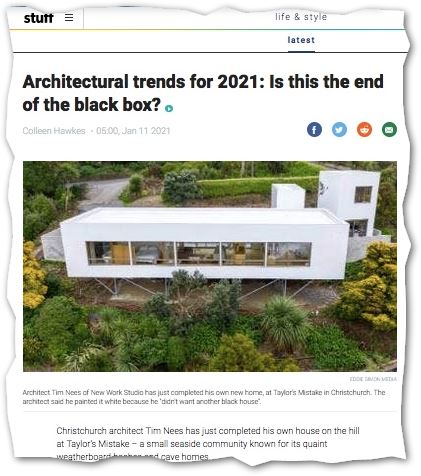Well-built high-performance buildings need mechanical ventilation. Times have changed, nobody’s really arguing about this any more. But all the other homes built in the last 50 years need mechanical ventilation also—those that only just met the Building Code minimum standards of their day. They’re not airtight (many of them are horribly draughty) but they still need proper ventilation. How do …
Don’t get scammed

Recently my son asked me if I’d ever been scanned. (He was really interested, which is becoming less common when I’m speaking now he’s 12.) At first I couldn’t think of any instances. However, over the next week I built up a pretty big list and generated quite a bit of entertainment for my son. The first question is, what …
Taking the Passive House story to the people

How do we (“we” being those who care about high-performance buildings and all the benefits they deliver to people and the environment) bring about the change we want to see? There are multiple pathways and we need to push ahead on all of them at once. One of course is government policy. One bright spot in 2020 was seeing …
Social housing, re-imagined

This analysis from The NewStatesman, comparing Vienna’s tradition of social housing to the UK, is a concise and insightful account and I recommend you go and read it in its entirety. Vienna’s accomplishments are enough to make millenials shut out of the home ownership in New Zealand weep. For all of us, it’s a stark reminder that there are other …
City Council: we will build 500 PH units in 5 years

More Passive House units have been completed in Exeter in the United Kingdom: what a start to the new year for the lucky social housing tenants who are moving in and what an example New Zealand could follow. Exeter is a small city in Devon, in the southwest of England, which has established a big reputation for Passive House development. …
Social housing can be very good and not cost more (it’s proven)

The first time you do something, it takes longer. If you’re paying staff to do it, it costs more again. If you import just one new building component and you have to explain to Building Code officials why it’s so very much better than the crap considered an Acceptable Solution and how they should allow your project to include it, …
New government serious about ‘wood first’
I’ve heard (unofficial) news out of Wellington suggesting the new government is serious about a ‘wood first’ procurement policy for government buildings. Stand by for an official announcement. It can only help to have a Minister of Forestry who actually has forestry qualifications: the sort you get from the School of Forestry but also the ones learned (a long while …
Wellington worst place for damp, mouldy housing

If you missed this in-depth Stuff article, it’s worth reviewing: Infometrics senior economist Brad Olsen used the latest census data to find where in New Zealand, on average, has the most mouldy, damp houses with no heating. And the “winner” of this not-coveted title? Wellington. Mould impacts health and wellbeing. Myself, I know my asthma is definitely enhanced by it. …
Toward net-zero building: put this paper on your reading list

Advances Toward a Net-Zero Global Building Sector is a BIG tech paper, happily published with open access so people outside of academic institutions can actually read it. See below for the abstract and a link to the paper. New Zealand is well represented in the paper’s database due to our Passive House buildings. The following items are worth paying particular …